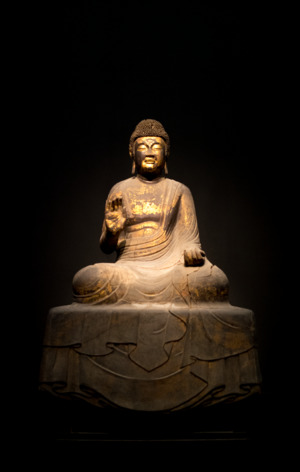Nara period facts for kids

The Great Buddha at Nara (Tōdai-ji), 752 CE.
The Nara period (奈良時代, Nara jidai) is a time in the history of Japan which lasted from 710 to 794. This grouping of years is named after city of Nara.
Contents
History
In 710, Empress Gemmei established the capital of Japan at Heijō-kyō, which is present-day Nara. Gemmei's palace was named Nara-no-miya. Except for two brief times, the reigns of the next seven monarchs were centered in the palace which was built by Gemmei.
The capital at Nara was modeled after Chang'an, the capital city of Tang China. The Nara period was marked by the introduction of Tang systems and culture.
Timeline
- 710 (Wadō 3): Japan's capital city was established in Nara (Heijō-kyō).
- 712 (Wadō 5): The Kojiki was finished.
- 720 (Yōrō 4): Nihon Shoki completed.
- 749-752 (Tenpyō-shōhō 1-4): Emperor Shōmu orders the creation of a large statue of Buddha (Daibutsu) at Tōdai-ji
- 760 (Tenpyō-hōji 4): Man'yōshū completed.
- 784 (Enryaku 3): The emperor moves the capital to Nagaoka
- 788 (Enryaku 7): The Buddhist monk Saichō establishes a monastery on Mt Hiei
- December 17, 794 (Enryaku 13, 21st day of the 10th month): The Emperor moves by carriage in a grand procession from Nara to Heian-kyō.
Related pages
Images for kids
See also
 In Spanish: Período Nara para niños
In Spanish: Período Nara para niños

All content from Kiddle encyclopedia articles (including the article images and facts) can be freely used under Attribution-ShareAlike license, unless stated otherwise. Cite this article:
Nara period Facts for Kids. Kiddle Encyclopedia.



